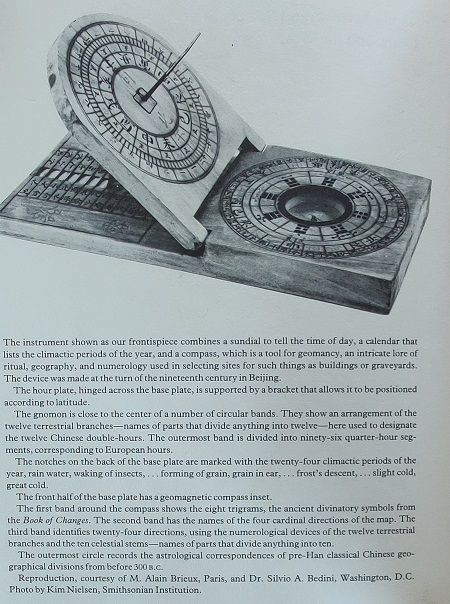There exists a connection with the Luo Shu and He Tu concerning the numerical pattern:
1 - 6 - 2 - 7 -3 - 8 - 4 - 9 - 5
This pattern emerges in the 9x9 magic square in the Luo Shu format. There are several hundred trillion ways to arrange the numbers one thru 81 in a 9x9 magic square, but only one arrangement satisfies the definition of a Luo Shu magic square.
The above illustration defines the Luo Shu as a mathematical formula that can be expanded to create larger squares; this will generate an unique Pythagorean triplet of numbers at the heart of any magic square constructed in this manner. This was a most significant concept to the early Chinese, Daoists, and even the early Christians (who incorporated magic squares onto book covers of illuminated manuscripts).
In fact, parts of the above illustration originate from a drawing that appeared in 1687 in a book called Astronomia Europaea, by Ferdinand Verbiest, a most courageous Jesuit priest who was one of the earliest and most influential Jesuits to penetrate China. Matteo Ricci was the first famous Jesuit priest to establish a Christian foundation in China in 1582.
The Jesuits were no doubt interested in older Chinese traditions such as the Luo Shu. The page in Verbiest's book which demonstrated the Luo Shu as the model of the Universe was the first indication that the Western world (specifically the Jesuits) knew the connection of the Luo Shu with the Pythagorean Theorem. This was in 1687. Athanasius Kircher's frontpiece of Arithmologia (1666) strongly suggests that he was aware of this connection as well.
The two Jesuits, Verbiest and Kircher, shared many interests and did know of each other. Verbiest stayed at the College of Rome in 1652 and 1653 while Kircher was living there and teaching mathematics as well as overseeing the Museum Kircherian. The two also exchanged letters.
Kircher was influenced by Pythagorean and Platonic philosophies as well as magic squares as these concepts were expressed as symbols in his art. Mathematics and astronomy were very important concepts to the Jesuits who were a part of the China mission over four hundred years ago. The Christian expertise in math and astronomy would help to establish credibility with the Chinese government. Soon the Jesuits were running the Bureau of Astronomy and correctly adjusting the Chinese calendar.
Was the Luo Shu of interest to the Christian religion?
Yes, the Luo Shu was a vehicle to incorporate mystical mathematical symbolism into art and architecture and was used by the early Christians as early as the eighth century.
This book, The Language of Numbers Demystified, is now available as an e-book. Deeper explanations than the present blog is able to elaborate upon are provided in this unique book.













